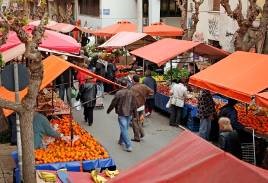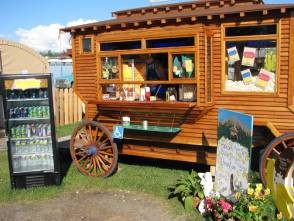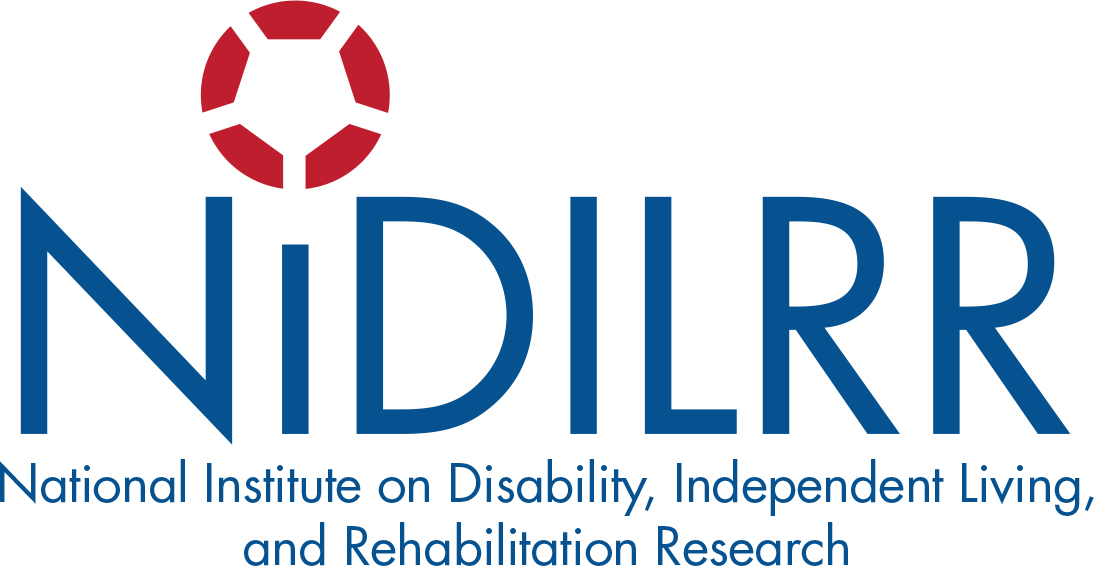Printer-Friendly PDF | Large-Print PDF
Introduction
Today, over 3,200 fairs are held in North America each year. They provide industrial exhibits, demonstrations and competition aimed at the advancement of livestock, horticulture and agriculture with special emphasis placed on educational activities such as 4-H, FFA and similar youth development programs. While enjoying these high-minded pursuits, fair visitors are also able to see, hear, touch, smell and taste the richness and variety of what the world has to offer. A fair offers competition for the best agricultural and domestic products of the county and/or community (or region or state) and an annual celebration for the community to come together, to share, to learn. While fairs and festivals have similarities, a fair involves agricultural events. This includes various farm animal shows and the traditional judging of the best grown vegetables, etc.
The Americans with Disabilities Act (ADA) requires businesses that serve the public to remove barriers from older buildings and to design and build new facilities that provide access to customers with disabilities. A key component of ADA compliance is maintaining those features so they remain usable. Businesses spend money to remove barriers. And, businesses need to protect that investment. Even brand-new buildings designed for complete accessibility can become inaccessible without proper attention. If key elements – often including the parking, building entrance, route into and through the establishment, access to the store’s goods and services, restrooms, cashier stations, and egress – are not maintained, then access is reduced or eliminated. A poorly placed trashcan or a locked door can make a building unusable - a waste of money.
Regardless of size or income, most fairs and festivals have legal obligations to provide and maintain accessibility for visitors with disabilities. Privately operated fairs are covered as public accommodations under Title III of the Americans with Disabilities Act (ADA); fairs operated by state or local governments are covered by the ADA’s Title II; and fairs that receive federal funding – whether they are covered by Title II or Title III – are also covered by Section 504 of the Rehabilitation Act.
This document identifies ways that businesses can maintain their investment in access with little or no extra cost. Issues will vary, of course, with individual events and festivals.

Fair and Festival Investments in Access
Since the 1990s, numerous fairs and festivals across the country have initiated efforts to improve accessibility of their infrastructure and programs for visitors with disabilities. Today, fairs and festivals that invest time and money to remove barriers from their facilities, design accessible exhibitions, and provide effective communication for their programs can potentially attract millions of visitors with disabilities. Elements such as accessible parking, entrances without stairs, exhibit labels that can be read by visitors who are seated or standing, large-print exhibition brochures, and captioned multimedia programs help reach this huge and growing body of customers.
The key to protecting these investments is maintaining the accessibility that has been put into place – both the general features of a public accommodation and the features and programs that particularly define a fair or festival experience. When accessibility programs and services are discontinued or accessible building features are blocked by temporary exhibitions or removed during renovations, the loss of invested time and money can be substantial.
Maintaining Accessible Features in Buildings and Grounds
Fair buildings and the surrounding grounds are as much a part of the event experience as the exhibits and programs within them. The following are examples of typical festival building and grounds accessibility maintenance issues and best practices.
Accessible Parking
-
Accessible parking requires that sufficient space be provided alongside the vehicle so that persons using mobility aids, including wheelchairs, can transfer and maneuver to and from the vehicle. Accessible parking also involves the appropriate designation and location of spaces and their connection to an accessible route. Chapter 5: Parking Spaces, US Access Board
- Provide one or more staff at all times to assist fair patrons who use the parking designated for patrons with disabilities.
Accessible Entrances
-
Provide and maintain an accessible prepared path from parking and the drop off area to the entrance and exit of the facility.
-
Provide an accessible ticket window at the ticket booth location with a service counter or auxiliary counter at least 36 inches in length with a maximum height of 36 inches above the finish floor. In alterations where it is technically infeasible to provide an accessible counter, an auxiliary counter meeting these requirements may be provided no higher than 36 inches above the ground/floor. If needed, provide curbside service as a last resort.
- Provide an accessible entrance to the First Aid facility.
Accessible Routes Throughout the Fair
-
If directional signs to accessible building features are mounted on movable pedestals, they must remain in place and continue to provide correct directions, including information about accessible route(s) for special events.
-
Maintain sidewalks and curb ramps to prevent large cracks and uneven surfaces from forming.
-
Movable exhibition seating or furniture for exhibit interactives must be monitored so that they do not block accessible routes, present tripping hazards, or prevent access to exhibit cases, interactives, or media presentations.
- Some people with visual disabilities use canes to detect barriers that protrude into the path of travel, whether along an accessible route or any other circulation path. Objects, signage, light fixtures, and exhibitry (or tree branches and shrubs along outdoor paths) can present collision hazards if they are between 27 to 80 inches above the ground and protrude more than 4” into the path of travel. Care must be taken either to keep protruding objects or those with low head clearance out of the path of travel or to install cane-detectible barriers below them. Eliminate billowy, long table covers that spill into the accessible route. These create trip hazards for customers with low vision and snag under patrons’ crutches, canes, and walkers and in their wheelchair wheels.
Accessible Restroom Facilities
-
Unlock accessible public restrooms, toilet stalls, and fitting rooms and make sure they are available to customers with disabilities during business hours. They cannot be used as temporary storage areas or staff locker space.
-
At every festival restroom or "privy" area, provide at least one accessible portable toilet on an accessible route.
-
If needed, modify lavatories provided at privy areas to comply with ADA Standards.
-
Place signage complying with the Standards at each privy area that directs individuals to the accessible portable toilets.
-
Eliminate furniture or equipment, such as shelving, large trash cans, and chairs, which take up required maneuvering space in fitting rooms and restrooms.
- Routinely refill the accessible paper towel and soap dispensers when all other dispensers are refilled.
Telephones
- At every bank of public pay phones provide at least one accessible pay telephone in compliance with ADA Standards.
Maintaining Accessibility in Fair Policies, Practices and Procedures
-
Once inside the fairgrounds, visitors with disabilities want to fully experience all that the fair has to offer – exhibitions, programs, shops, special events, publications, and videos. The following are examples of typical fair program maintenance issues.
-
Features should meet ADA Standards and safety and usefulness must always be examined. For example, portable exhibits and performing areas where entry for participant is intended should be accessible.
-
One way to maintain accessible features is to consistently educate all staff. Tell employees the location and purpose of accessible retail elements and explain the importance of keeping the features usable. Provide employees with procedures for correcting problems. Together staff can ensure that the investment in accessibility brings the greatest possible return. Example: Staff and volunteers working at the information desk or answering questions by telephone should know what accessibility services are available and how to request them, including those that must be scheduled in advance.
-
Staff and volunteers should know about the telephone relay system for people who are deaf, hard of hearing, or have speech disabilities and be prepared to use it correctly.
-
Signage and information in brochures about accessibility must be kept current and available upon request.
- Alternate formats for printed brochures and program materials (e.g., Braille, CD-ROM, large print) must be kept current, in stock, and easy to find by the public. Generally they should be available to visitors on the same day that the standard print versions are available, including materials associated with traveling and other temporary exhibitions.
-
Auxiliary aids and services (e.g., assistive listening devices, audio description tours, closed captioning controls in exhibitions) must remain operable except for maintenance or repair. Regular testing of equipment is essential to keep them in working order.
-
If touchable objects are used to provide access to the content of exhibitions and programs for people with disabilities, care should be taken to maintain the objects’ condition. If an object is removed from the tactile collection for any reason, it should be replaced with one of equal quality that conveys tactually the same information about the exhibition or program’s themes.
-
If the fair offers a public website about its exhibitions and programs, the information should be available to everyone, using methods such as screen-reader-accessible web design, adjustable font and color contrast, and high-contrast images. In addition, if the fair uses the website to present accessibility information or to serve as an alternate format for exhibition labels or printed materials, the information should be current and easy to find on the site.
- Additional policies that may need to be instituted include Service Animals and the use of Segways and/or non-traditional mobility devices.
Best Practices
-
Develop a policy for providing goods and services to individuals with disabilities in accordance with the requirements of Title III of the ADA. Institute a clause in the contract requiring that the shop or booth owners provide access to their goods or services for patrons with disabilities.
-
Create training materials on providing access to patrons who have disabilities and distribute them to all shop owners and employees prior to the event. The materials should include information about the requirements of the ADA, policies with respect to providing access to the programs, activities, and services at the fair, the location of accessible toilet facilities and telephones, and the procedures for contacting professional staff if questions or problems arise pertaining to accessibility for persons with disabilities.
- Provide written information within the fair brochure regarding the accommodations available to individuals with disabilities at the fair. This will include information about the location of accessible toilets and telephones; the parking assistance provided; policies with respect to providing access to the programs, activities, and services at the fair; and the procedures for contacting professional staff if questions or problems arise pertaining to accessibility for persons with disabilities, in addition to any other relevant information. Prominently display the written information and make it available for distribution at all fair entrances and ticket and information booths.
Maintaining Access To and Within Individual Booths - Three Priorities
1. Provide Access into Booth
Provide or modify existing ramp/make curb cuts in raised walks and at entrances
• Add 2-inch high ramp edge protection or handrails
• Maintain ramp bottom area transition
Widen doors/ entrances to 32 inches minimum
Be on stable, firm, slip-resistant and compact surfaces
Remove protruding objects in path of travel
If technically infeasible, create accessible signage and/or plan for service to individuals who cannot enter booth, but want to access service or merchandise
2. Provide an Accessible Route Within the Shop
Clear accessible path within shops
• 36 inches wide, 48 inches long clear floor space, 80 inches height
Reposition shelves/ merchandise
Remove or re-position objects that protrude more than 4 inches into path of travel
3. Provide an Accessible Counter Within the Booth
Create a service counter or auxiliary counter on an accessible route at least 36 inches in length with a maximum height of 36 inches above the finish floor. In alterations where it is technically infeasible to provide an accessible counter, an auxiliary counter meeting these requirements may be provided no higher than 36 inches above the ground/floor, e.g., folding shelf
If needed, provide curbside service as a last resort
Individual shops must not allow merchandise to spill into aisles and narrow the width of the accessible route. Sales and ticket counters that have been lowered to provide access must be clear and unobstructed for use by people with disabilities. Staff should know how to assist people in reaching or seeing merchandise.

HOW you provide access is not as important as….…
...THAT you provide access.
Accessibility attracts the family, friends, employers, communities and service providers of people with disabilities. Access to goods and services won’t go unnoticed by parents with strollers and elderly persons looking for easily navigated routes. Veterans with disabilities, baby boomers and even people with temporary disabilities will be your customers, so expand your idea of accessibility! Eighty percent of business still comes from word of mouth. Create good customers by providing excellent customer service.
Resources
US Access Board, ta@access-board.gov, 800-872-2253
A Planning Guide for Making Temporary Events Accessible to People With Disabilities
Tax Incentives for Providing Business Accessibility
 The Northwest ADA Center is a member of the ADA National Network. This fact sheet was developed under grant from the Administration for Community Living (ACL), NIDILRR grant #90DPAD0002. However, the contents do not necessarily represent the policy of the ACL, and you should not assume endorsement by the federal government.
The Northwest ADA Center is a member of the ADA National Network. This fact sheet was developed under grant from the Administration for Community Living (ACL), NIDILRR grant #90DPAD0002. However, the contents do not necessarily represent the policy of the ACL, and you should not assume endorsement by the federal government.
